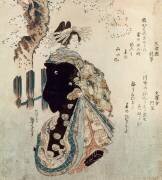Shop art print and framed art Haymaking in the Auvergne by Rosa Bonheur
Customise
Your art print
Haymaking in the Auvergne OF Rosa Bonheur
Haymaking in the Auvergne
Rosa Bonheur's Haymaking in Auvergne: an emblematic work
A talented animal painter, Rosa Bonheur is particularly famous for her painting "Haymaking in Auvergne". This work depicts with finesse and realism the work of Auvergne farmers during the cutting and harvesting of hay.
Historical and artistic context
Painted in 1855, "Haymaking in Auvergne" was part of a context marked by the rise of French painting. The second half of the 19th century saw the emergence of numerous artistic movements, such as Impressionism and Realism. It was in this effervescent atmosphere that Rosa Bonheur chose to depict rural life and its players.
The artist: Rosa Bonheur
Born in 1822, Rosa Bonheur is considered to be one of the first female painters to achieve international renown. From childhood, she developed a deep love of animals and decided to devote herself to animal painting. Her works feature various species, such as horses, cows and even sheep, and are strongly influenced by her own experience of the countryside and her meticulous observations.
Haying in Auvergne: a realistic and vivid representation
"Haymaking in Auvergne" is a painting that is part of the realist movement of the time. In it, Rosa Bonheur accurately depicts farmers at work cutting and harvesting hay, as well as their team of oxen and horses. The details of the traditional costumes, the tools used and the gestures performed testify to a desire to faithfully recreate rural life.
The characters and their environment
The work features several characters, men and women, busy with various tasks related to haymaking. Some can be seen mowing hay with scythes, while others are gathering bales of hay onto a cart pulled by oxen. The painting's background also offers a panoramic view of the mountains and green fields of the region.
Animals: key players in the scene
True to her love of animals, Rosa Bonheur gives a central place to oxen and horses in this work. The latter are depicted with great meticulousness, both anatomically and in their attitudes. Their postures and expressions convey their involvement in the work being done, echoing the collaboration between humans and animals that characterises rural life.
The message conveyed by the painting
Beyond its aesthetic dimension, "Haymaking in Auvergne" also echoes a social and political message. By choosing to depict peasants at work, Rosa Bonheur highlights their value and dignity, often neglected by contemporary society. In doing so, she is helping to raise the profile of the rural world and those who work in it.
A tribute to the work of farmers
By realistically depicting the efforts made by peasants when cutting and harvesting hay, Rosa Bonheur highlights the importance of their work in the subsistence and well-being of the community. In doing so, she reminds us that the rural world is based on ancestral know-how and solidarity between its members, which deserve recognition and respect.
A critique of industrial society
Through this idyllic depiction of rural life, Rosa Bonheur also expresses a certain nostalgia for the rise of industrial society, perceived as destructive and alienating. Haymaking, the emblematic activity of farm work, here symbolises a more authentic way of life that respects the environment.
Elements of composition and pictorial techniques
Rosa Bonheur uses several techniques to give her painting an impression of dynamism and depth. Of particular note is the use of perspective as well as a varied palette of colours, which contribute to the visual richness of the work.
Perspective and vanishing points
The artist uses linear perspective to structure his painting and guide the viewer's gaze. The lines of force converge towards a vanishing point at the centre of the composition, creating an impression of depth and space. This technique also highlights the different planes of the painting, from the foreground occupied by the figures and animals to the mountainous background.
The choice of colours and contrasts
Rosa Bonheur demonstrates great mastery in her use of colour and contrast. The palette used is rich and nuanced, combining warm tones (ochres, browns, reds) with the cooler hues of the landscape (blues, greens). The areas of light and shadow are also carefully worked, underlining the dynamics of the scene and giving the painting a solemn, majestic atmosphere.
This artwork is a painting from the classical period. It belongs to the naturalism style.
« Haymaking in the Auvergne » is kept at Château de Fontainebleau, Fontainebleau, France.
Find the full description of Haymaking in the Auvergne by Rosa Bonheur on Wikipedia.










































